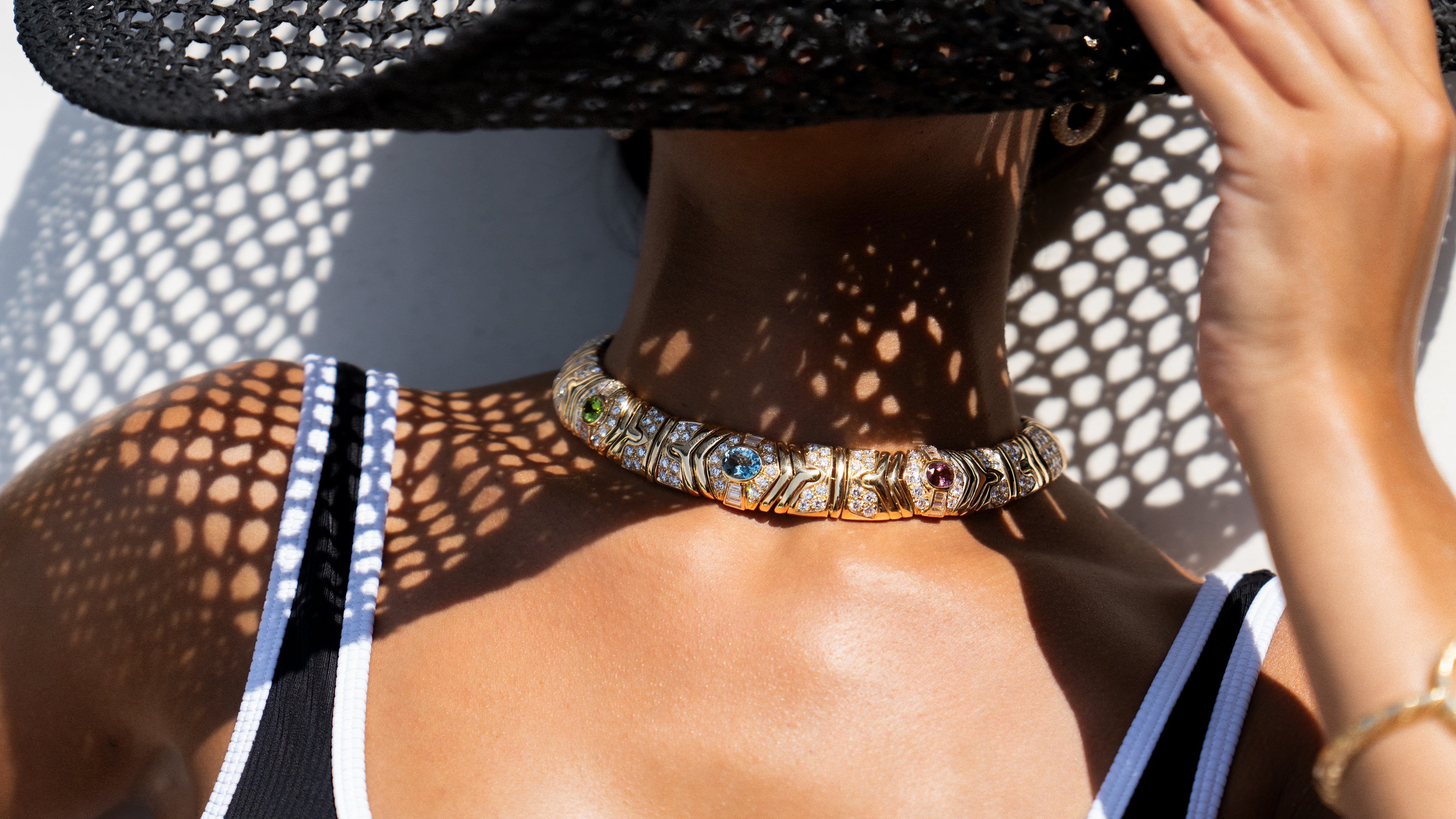The House of Marchak
"The Cartier of Kiev" was a talented young jeweler who enjoyed a storied career before the 1917 Russian Revolution.
Ukrainian Jewish Roots
Joseph Abramovich Marchak was born in 1854 in Ignatovka, just outside of Kiev. He left his hometown at the age of 14 to begin an apprenticeship in a jeweler's atelier. In 1878, at the age of 24, Marchak started his own business in the Podol, an impoverished Kiev neighborhood. Using the dowry he received from his young wife, along with what he fetched for pawning his clothes, he managed to produce his first gold chain.
From these humble beginnings, it took him a year until he made enough from his shop to move to a better area of town, on Kiev's main street. The quality and beauty of his craftsmanship began to receive attention from the local citizens. As his production became more sophisticated, he quickly moved from making chains to creating innovating pieces, employing his jewelry-making and goldsmithing talents. Marchak was a relentless innovator.
Changing Times
By the end of the nineteenth century, Russians were enjoying a period of prosperity, and Marchak was able to take advantage of the favorable state of the country's wealth. In 1890, Marchak journeyed to France to promote his burgeoning business.
Marchak used the finest materials: gold from Paris, Berlin, and Hamburg; silver from Moscow and platinum from St. Petersburg. He was also a big proponent of hiring the best craftsmen and giving them all the tools they needed to be extraordinary. He came up with an extensive design reference library that was continually updated to keep pace with changing tastes.
Marchak did a great deal of traveling, taking part in exhibitions in Moscow and St. Petersburg. The 1891 Franco-Russian show in Moscow was particularly influential on Marchak's designs during that time.
The year 1893 proved to be a boon for the House, Marchak's reputation, having traveled as far as the World's Fair in Chicago, where he was awarded a medal for his jewelry. The following year, he was again recognized for his work, this time at the Exposition Internationale d'Anvers in Antwerp, Belgium.
In a mere two decades, Marchak had earned a reputation as one of the most important jewelers in Russia.
His trips abroad proved to be essential to his creative process. Inspired by his discoveries, he brought back ways to improve his techniques. Even the devastation by the fire of his workshops in 1899 could not keep him down. Making the most of the catastrophe, Marchak enlarged and modernized his shop, hiring skilled artisans who shared his vision. From a staff of 20 in 1885, by the turn of the century, Marchak employed 150 workers.
In 1913, Tsar Nicholas II commemorated the 300th anniversary of the Romanov dynasty with official gifts created by Marchak. These were days of glory for the House of Marchak, but the company's success was no match for the Great War -- or the Russian Revolution that was to come just four years later.
Sadly, Joseph Marchak died of cancer in 1918.
The Next Generation
Joseph's youngest son, Alexander, inherited his father's creative spirit. Born in 1890, he took classes at the Ecole des Beaux-Arts in Paris. Before he had an opportunity to complete his studies and join his father's business, he was called home to serve in the Russian army during the Great War.
Along with a large number of Russians, Anthony and his family fled his native country after the war, concealing their jewelry creations within their clothing. Reaching Paris safely, they were welcomed by Joseph's son, Joachim, a physician who made his home in the City of Light.
A House Rebuilt
Marchak enjoyed a revival in Paris in the 1920s, with Alexander opening a shop in the Rue de la Paix, right next to Place Vendôme, the desired district for the City's finest jewelers. Marchak's originality and the quality of his work set him apart from other jewelers. On the cutting edge of the Art Deco period, Marchak became popular with the wealthy foreigners who took up residence in Paris after the war. The firm was known for its highly romanticized styles, employing motifs that included birds and flowers. Knots, baskets, and loops were incorporated, along with precious gemstones and moonstones, carved jade, and inlaid mother-of-pearl, creating an Oriental flavor.
In 1922, Marchak collaborated with Robert Linzeler to create some of the most memorable jewels of the Art Deco era. The pair was among 30 other exhibitors invited to the Exposition des Arts Decoratifs, where they were awarded the Grand Prix. At the Colonial Exhibition in 1931, Marchak won a second Grand Prix, this time in a solo effort.
Along with jewelry, Marchak also created a variety of objets d'art and accessories, including vanity cases, clocks and cigarette cases.
In spite of the outbreak of World War II, the firm continued to prosper, adapting to the times by switching from crafting in platinum to using gold.
Post-War
Following the Second World War, Marchak hired designer Alexander Diringer, formerly of Cartier, who remained with the House until the late 1960s. Jacques Verger also joined the staff, managing the American market, while Alexander Marchak focused on brand development in Paris.
During the 1950s, Marchak artisans created colorful jewels for their American clientele. Awash in diamonds and precious gemstones, their rings were worn high up on the finger. Contemporary brooches featured clusters of gemstones in a mixture of vibrant colors breaking with French jewelry traditions.
Jacques Verger was a rising star at Marchak. He became the head of the company and, with a partner, André Delanglade, bought out Marchak's shares. Alexander Marchak retired in 1957.
Sadly, most of Marchak's early work was lost to revolutions, wars, and social cataclysms. Aside from colorful catalogs that illustrate the wide range of luxurious jewels, we have only the word of reports dating from that time that profess the artistic flourish, humor, originality, and excellent craftsmanship of the House of Marchak.
